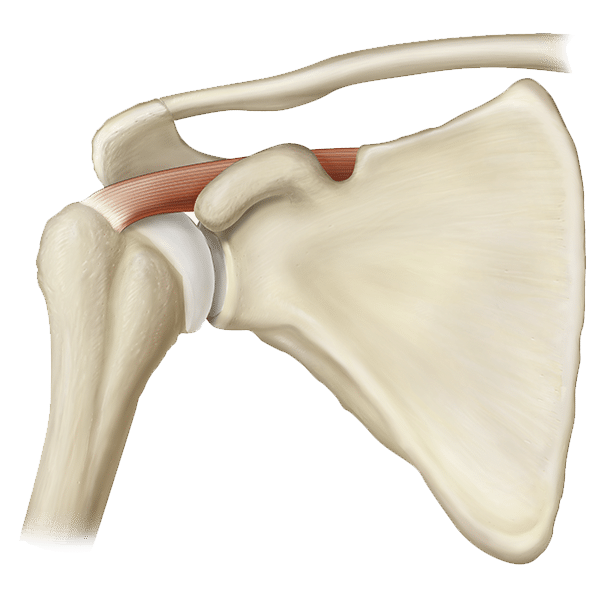SHOULDER REPLACEMENT
How Does Your Shoulder Work?

In a healthy shoulder, these portions of bone are covered with cartilage, which allows for painless motion—lifting, pushing and pulling. But arthritis can damage this protective cartilage, which makes these motions painful.
Arthritis is one of the most common conditions that causes wear and tear to your joint cartilage and develops after years of constant motion and pressure on the joints. If non-surgical treatment options such as medication, physical therapy or lifestyle changes fail to provide relief, your surgeon may recommend shoulder replacement surgery.
What Is A Shoulder Replacement?

Primary Shoulder Replacement

Reverse Shoulder Replacement

Frequently Asked Questions
In order to minimize risks, your surgeon may have you see your family physician before surgery to obtain tests. You also may need to have any upcoming dental work completed or prepare your home to avoid any post-surgery falls.
There are implants that have been documented to last 15-20 years. However, there are numerous factors that affect the longevity of a total joint replacement including patient indications (age, weight and activity level), implant design and materials used during surgery.
Just like your natural joint, the components of an artificial implant are subject to wear over time from friction caused by bending, straightening and supporting your body weight.
Therapy may begin the same day as your surgery and may continue up to four to six months post-op. Exercise is crucial for proper rehabilitation to promote blood flow, strengthen muscles and regain motion. Proper rehabilitation and willingness to follow all of your surgeon’s recommendations will contribute to a more successful recovery after surgery.
Most patients are able to resume everyday activities like climbing stairs and possibly driving three to four weeks post-op depending on your surgeon and your condition. This includes waist-level activities like writing for shoulder replacement patients. Activities such as golf, doubles tennis and swimming can usually be resumed, but only after a thorough evaluation by your surgeon. Recovery time will vary for each patient.
High-impact activities or contact sports are typically not recommended. These types of activities place an extreme amount of pressure on the joints, which could lead to complications.
Joint replacement surgery is a major operation and although it is extremely successful in most cases, some patients may experience complications, including but not limited to: infection, blood clots, implant breakage, malalignment and premature wear. Any of these can require additional surgery.
ExactechGPS® GUIDED TOTAL SHOULDER REPLACEMENT
Have you ever experienced your vehicle when it is out of alignment—your car movement doesn’t feel right and your tires may produce uneven wear, requiring you to need a new set? Joints in the body work in a very similar fashion.
When patients require a total joint replacement, proper placement and alignment of the implant is critical to the implant’s overall longevity and function. ExactechGPS® Guided Personalized Surgery combines surgeon expertise with an advanced computer system, similar to a navigation device in your car, to perform your joint replacement surgery with a goal of advanced accuracy and precision.
ExactechGPS pairs surgeon expertise with an advanced computer system to perform the patient’s shoulder surgery with a goal of improved accuracy and precision.
Benefits
The ExactechGPS Shoulder Application’s preoperative planning tool is designed to help surgeons understand their patient’s anatomy prior to surgery and plan the surgery through a virtual simulation
Surgeons can execute their plan in real time during the surgery based on a 3-D anatomical model of the patient’s shoulder, making adjustments as needed
Gives greater visibility to the shoulder anatomy, allowing for more consistent and accurate implant placement
Paired with Exactech’s Equinoxe Shoulder System, which has demonstrated excellent biomechanics and outcomes in its more than 10 years of use, as proven by more than 80 peer-reviewed clinical studies
How It Works

Equinoxe Shoulder System

The Equinoxe Shoulder System is a platform system that allows conversion of a primary or fracture shoulder replacement to a reverse with the same humeral stem, thereby conserving bone.
Equinoxe Primary and Reverse Shoulder System Features
- Help match each individual patient’s bone structure
- Preserve a patient’s natural anatomy
- Work in a variety of procedures
- Address unique clinical challenges
